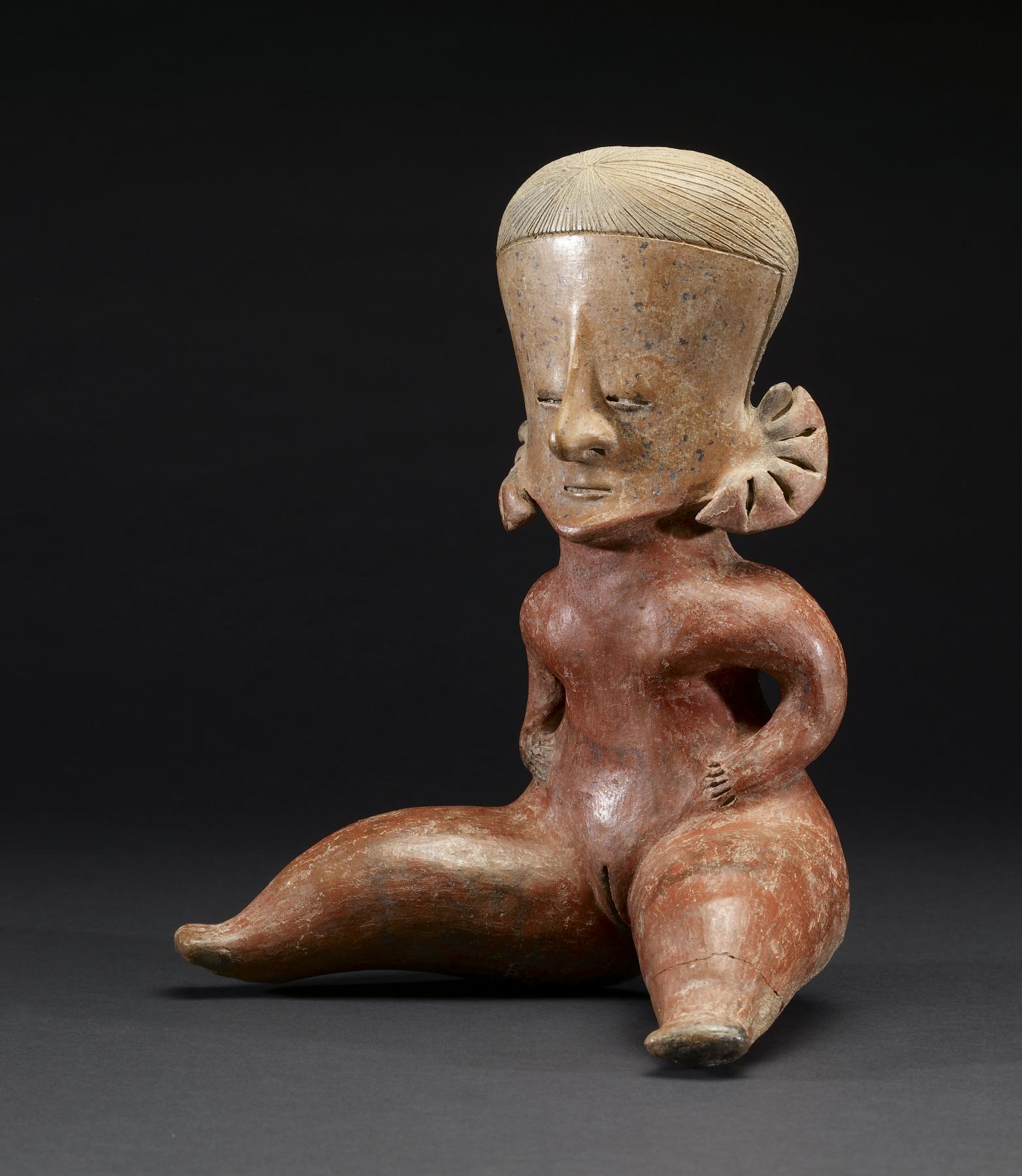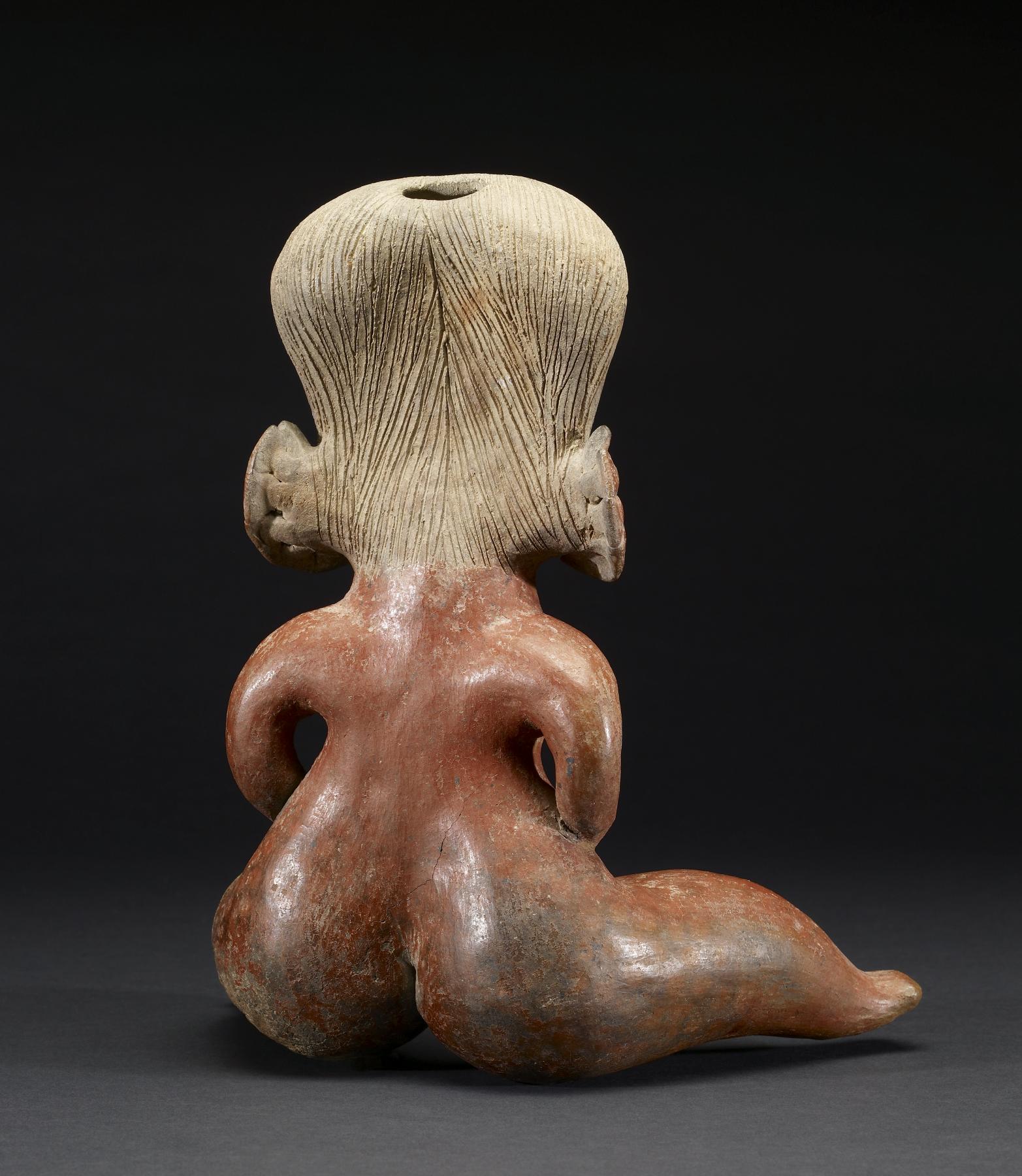Seated Woman
(Ancient Americas )
This exceptional exploration of the human form has a number of characteristics that underscore the fact that ancient artistic styles throughout West Mexico do not conform to modern political boundaries despite our use of Mexican states to name the region's ancient cultures. The facial features and figural abstraction attest to connections between the San Sebastián Red style of Jalisco and the Lagunillas pottery sculptures of adjacent Nayarit. The female figure's facial serenity matches that of the man (2009.20.32), although the focus is not her face but rather her voluptuous body. Small, curved arms and rounded legs with delicate feet create an undulating form of lyrical beauty. Sexual maturity is the implicit narrative of this sculpture, implied by the open position of the legs, the hands framing the figure's pelvic area, the articulation of her genitalia, and the use of negative-resist decoration on her abdomen and thighs to draw attention to her reproductive gift. The ample thighs and voluptuous buttocks emphasize the theme of reproductive health and vitality.
Provenance
Provenance (from the French provenir, 'to come from/forth') is the chronology of the ownership, custody, or location of a historical object. Learn more about provenance at the Walters.
David Stuart Galleries; purchased by John G. Bourne, Santa Fe, New Mexico, between 1960 and 1969; given to Walters Art Museum, 2013.
Geographies
Mexico, Nayarit (Place of Origin)
Measurements
H: 11 3/8 x W: 10 1/16 x D: 6 1/8 in. (28.9 x 25.5 x 15.5 cm)
Credit Line
Gift of John G. Bourne, 2013
Location in Museum
Not on view
Accession Number
In libraries, galleries, museums, and archives, an accession number is a unique identifier assigned to each object in the collection.
In libraries, galleries, museums, and archives, an accession number is a unique identifier assigned to each object in the collection.
2009.20.168






